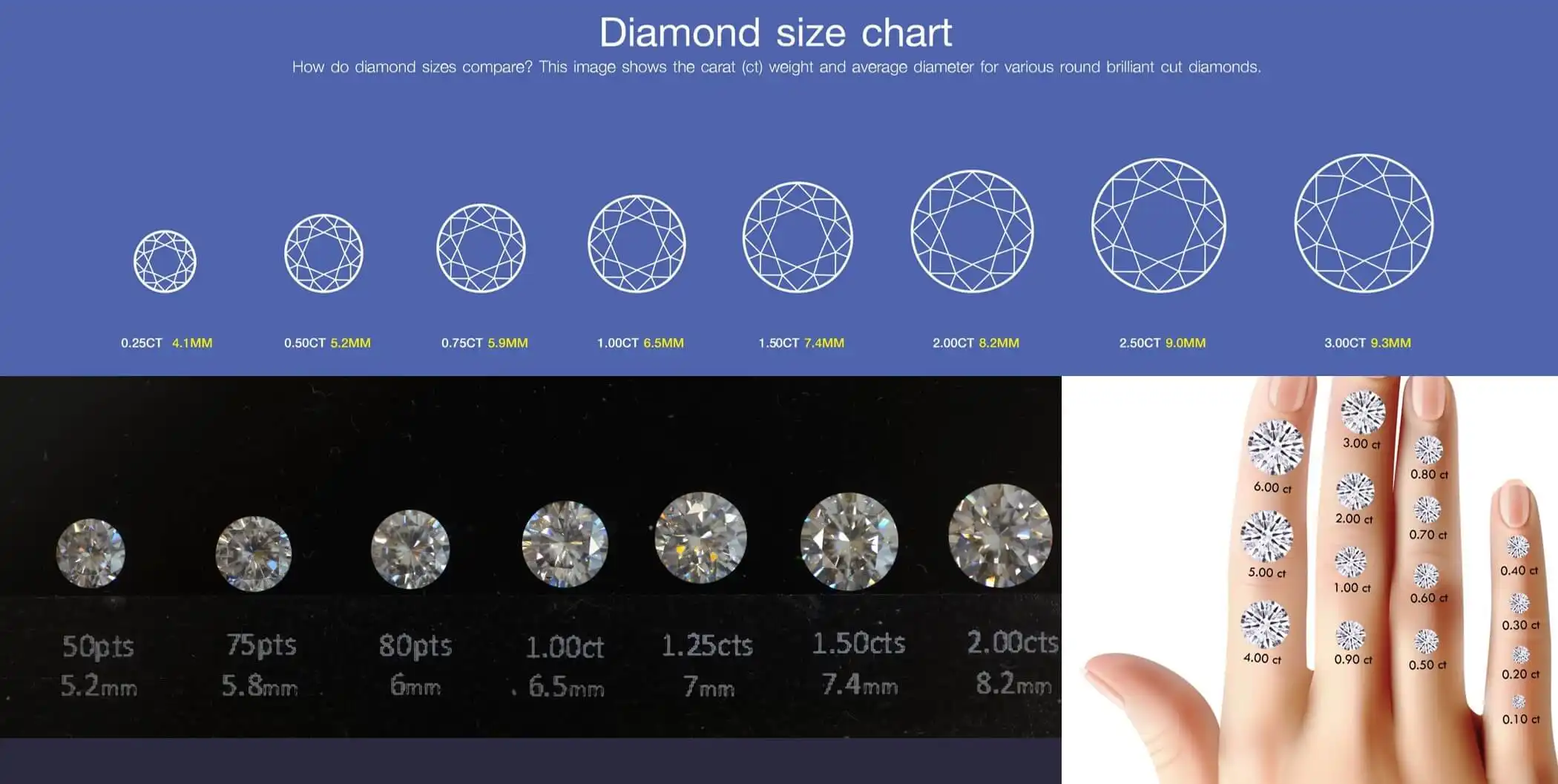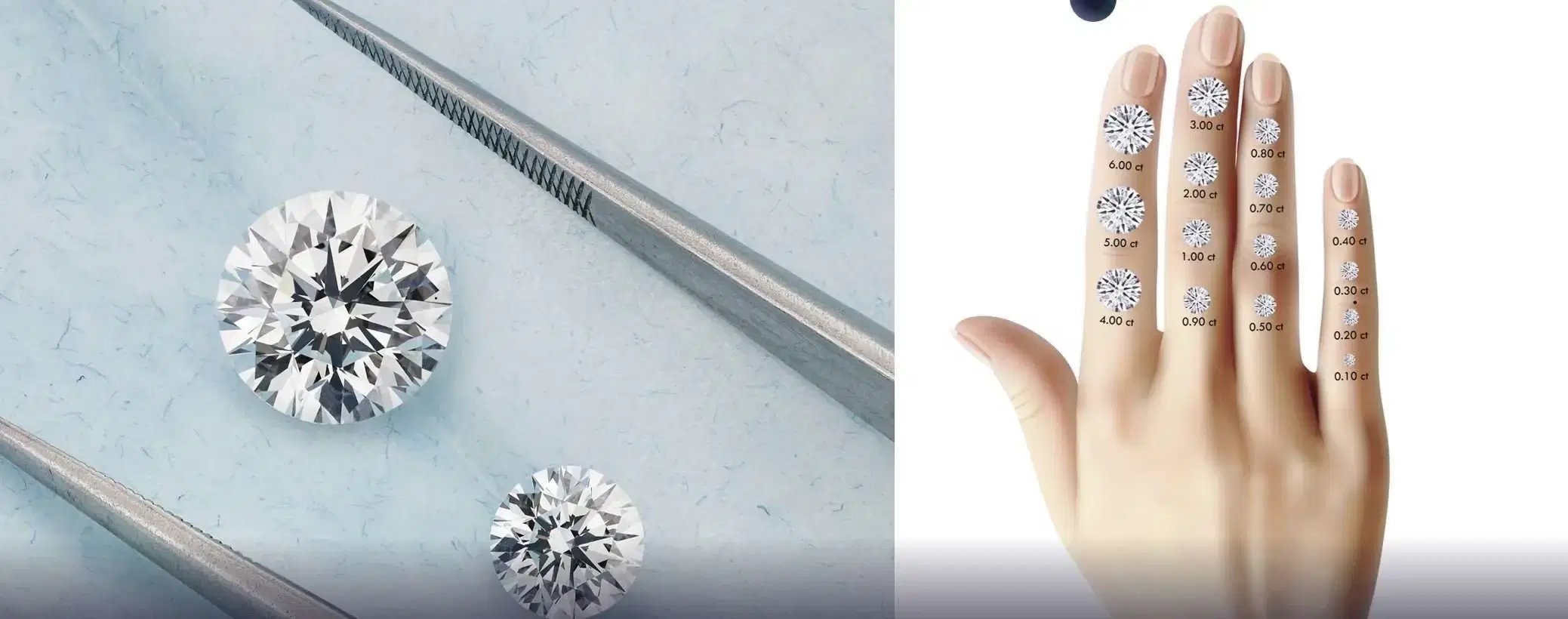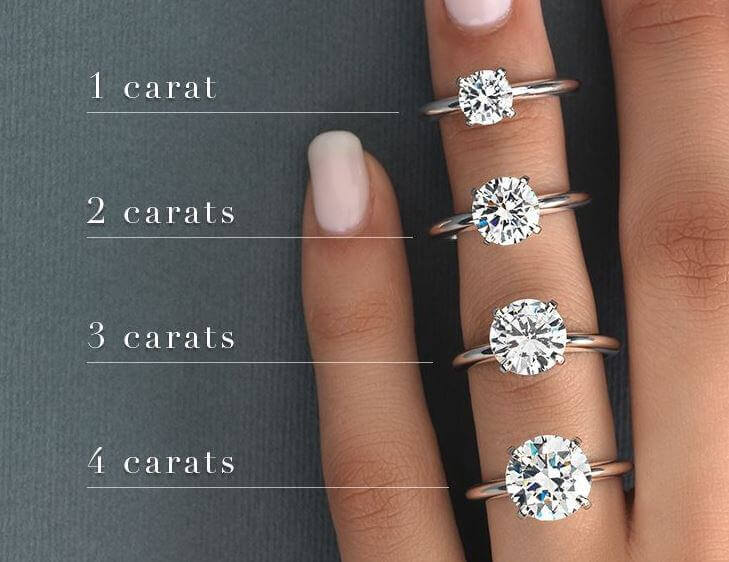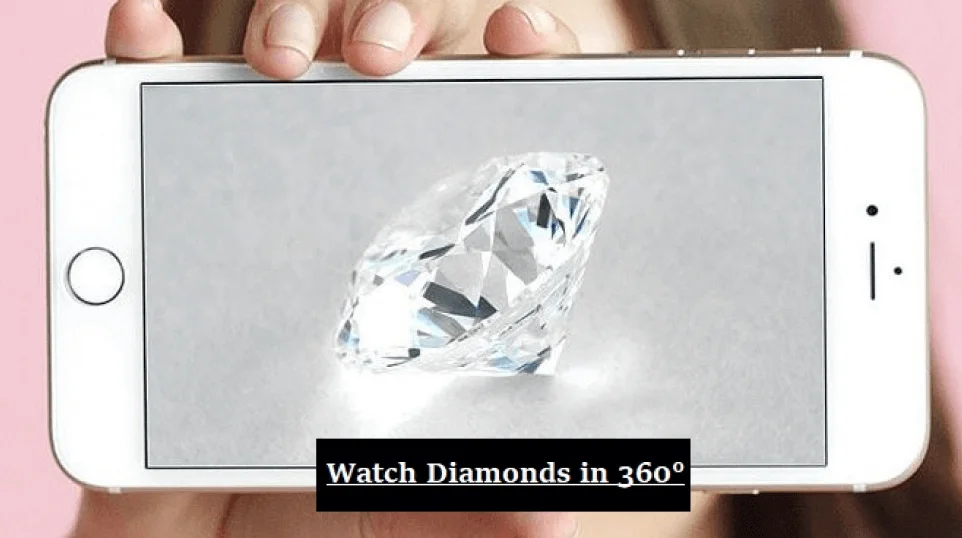1. Shape and Size
The first element that determines the price of a 3 carat diamond is its shape and size. To better understand this, it is important to distinguish between a diamond's shape and
its cut.
Although the two terms are usually used interchangeably,
they denote different things altogether. The shape of a diamond generally
refers to the outline of the stone or its external figure—referring to a
diamond as a pear, round brilliant, or cushion translates into making reference
to its shape. On the other hand, the cut of a diamond refers to the diamond’s
facets, dimensions, symmetry, and reflective attributes.
The shape of a diamond directly impacts the size of the
stone, ultimately influencing the cost of the gem. The size of a diamond
relative to its shape is often known as the face-up size—the bigger the size,
the higher the cost. According to research conducted in 2018, most jewelry
shoppers considered size one of the most important factors when buying
diamonds. Finer aspects, such as the diamond's width, weight, height, and length, further influenced this element.
The following chart illustrates the different shapes of 3 carat
diamonds, their corresponding face-up sizes, and their average cost.
The chart compares the prices of 3 carat diamonds across
various shapes based on the VS1/VS2 clarity score and G/H color range. Be that
as it may, the chart is not meant to explicitly push diamonds of the said
clarity score and color range. Indeed, better bargains on diamonds with
lower color and clarity scores
can still be found.
The chart shows that the significant price variations mostly depend on the cut quality. It is also evident that fancy-shaped 3 carat diamonds cost significantly less. They might appear more elegant on the finger compared to other diamond shapes, such as the round one. Another benefit of going for fancy-shaped 3 carat diamonds is that they feature larger face-up sizes and tend to look bigger than they are. Such an excellent illusion
of size positively influences the diamond’s light and color-handling properties.
A fancy-shaped 3 carat stone is generally cheaper, looks
bigger, and comes with maximum fire and brilliance.
2. The Diamond Cut
The cut of a 3 carat diamond impacts its price nearly the
same way the shape does. The cut of a diamond affects both its brilliance and
performance. For instance, this
diamond may look almost as big as this
one, though it can be seen that the former creates a bigger
impression in terms of fire and brilliance than the latter.
The cut of a diamond depends on the skill and craftsmanship
of the cutter. A diamond can be graded as poor, fair, good, very good, or excellent based on the cut alone. When cutting raw diamonds, cutters use
their professionalism and good judgment to determine how best to combine the
different proportions of the stone—the primary motivation being to maximize the
diamonds’ sparkle.
Overall, a 3 carat diamond is easier to cut than diamonds
of smaller sizes. However, the number of inclusions and the desired level of
brilliance could further complicate the process. This explains why round
diamonds are the most expensive since they require more expertise to cut. The
oval, marquise, and Asscher cuts follow in that order.
3. The Diamond Color
Three carat diamonds come in various colors that are priced
differently.
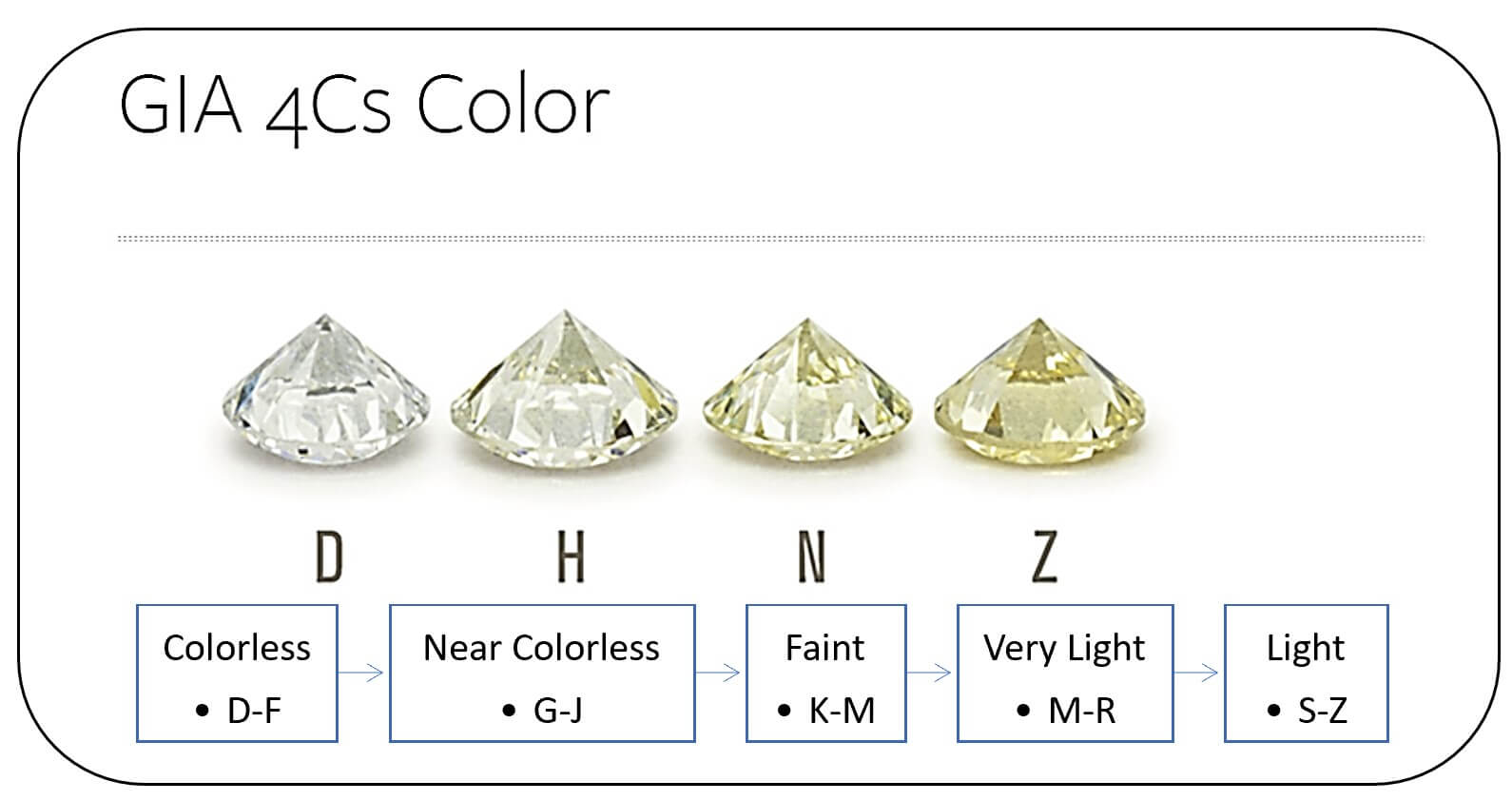
First, let us emphasize that diamonds are primarily graded
depending on their absence of colors, which is why colorless stones are more
expensive. The presence of hues and tints makes all the difference in color.
The hues often result from the presence of nitrogen trapped inside the diamond.
Nonetheless, there is an exception to this rule.
In certain circumstances, a diamond may have an intensely
strong color that usually emanates from trace elements within the stone. Due to
their rarity, intensely colored diamonds, also known as fancies, are expensive.
Another thing to remember is that the role color plays in
defining a diamond’s quality improves with its size. Thus, when shopping for a 3 carat diamond, always check the stone for even the slightest tint. The convention is to choose diamonds that range from H to I on the diamond color range for white platinum or gold settings. Any 3 carat diamond on
a lower color grade for yellow or rose gold rings will do.
However, do not always rely on color grades as the ideal
indicators of the performance of a 3 carat diamond on a ring. When grading
diamonds based on their colors, gemologists often look at the body color from
the diamond’s side, not its face-up appearance. Therefore, while a 3 carat
diamond may come with a hefty price tag due to its high score on the color
grade, its face-up appearance may not look as sparkly.
4. Clarity Differences
Diamond clarity is determined by the amount and the location of its flaws, most of which are normally internal and also known as inclusions.
When they occur externally, they are referred to as surface irregularities.
Flaws directly affect the light-handling properties of a diamond, hence
decrementing its value.
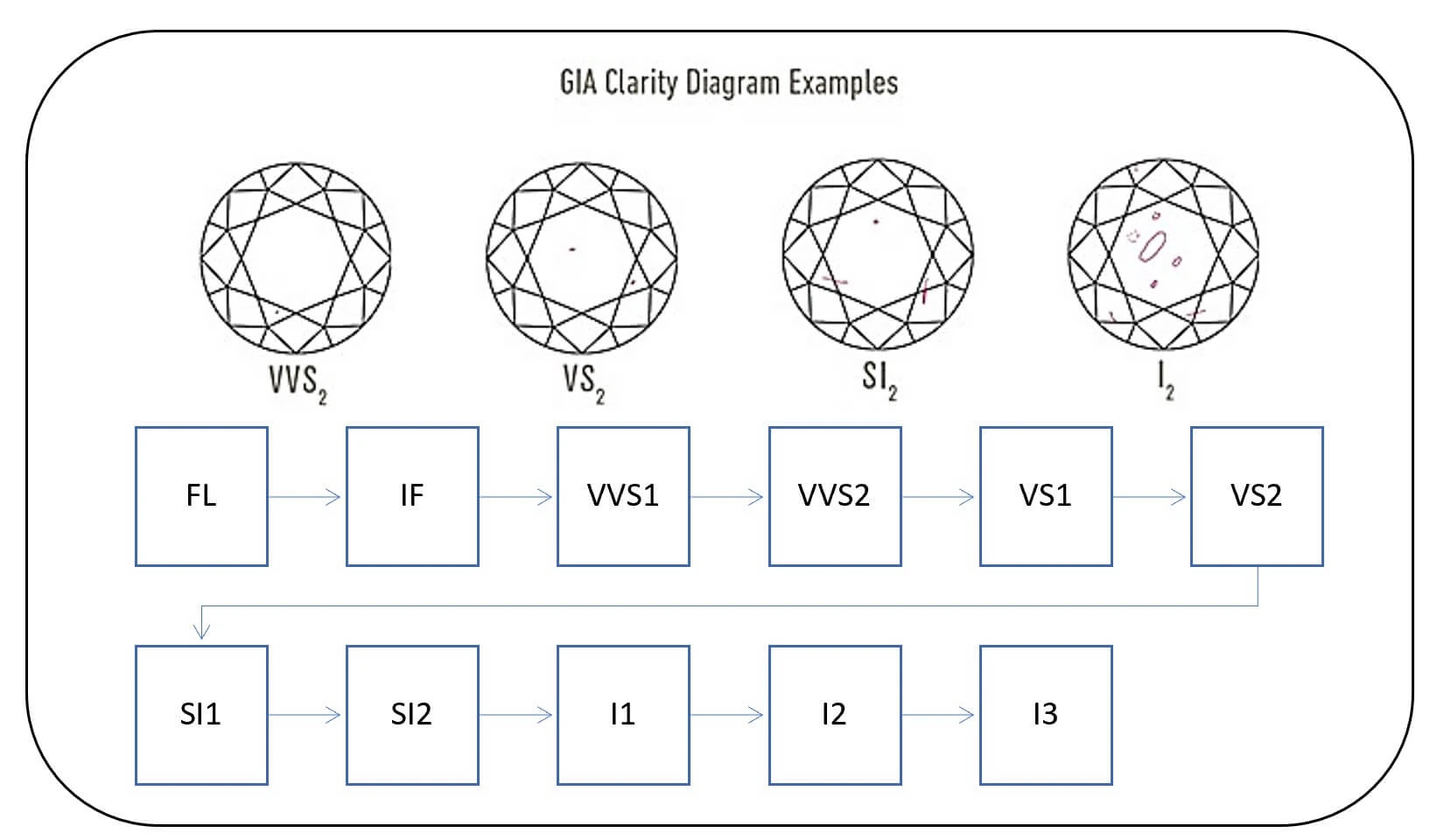
Larger diamonds readily show their inclusions. For
instance, a 3 carat diamond with an SI2 clarity score on the scale will reveal
its flaws more readily than a 1 carat diamond with the same clarity
grade. Therefore, always insist on a 3 carat diamond with higher clarity
grades.
Although their clarity significantly influences the cost of
3 carat diamonds, experts warn against blindly following the clarity grading
formula. A shopper may come across 3 carat diamonds with similar
clarity grades but at different prices. The visibility of those inclusions might cause price variations. Moreover, clarity is quite a
relative and subjective trait; therefore, choosing an eye-clean diamond is the best bet.
Also, it is worth noting that the prices of 3 carat
diamonds vary exponentially based on this
3 carat diamond differs only slightly from this
one on clarity. But their prices differ significantly.
5. The Fluorescence
When shopping for a 3 carat diamond, do not dwell too much
on the four Cs as to forget the other finer aspects that dictate the overall
price of the diamond. Diamond fluorescence refers
to the extent to which the stone glows when exposed to ultraviolet light. It mostly results from the presence of phosphorus within the internal structure of
a diamond. It is important to stress that in this regard, phosphorus is not
considered a flaw but a positive element.
Contrary to popular belief, the relationship between the
price of a 3 carat diamond and its fluorescence is not always relative. While
all diamonds feature a degree of fluorescence, the standard gemological equipment does not capture that quality. Statistics suggest that only
35% of diamonds emit some glow. In most cases, fluorescence will make a diamond
look hazy. As such, fluorescent 3 carat diamonds might be priced between 10 –
20% cheaper than those with fainter and zero fluorescence. However, a diamond’s
glow can also enhance the whiteness and brilliance of the stone.
Many diamond dealers play a psychological game with the fluorescence aspect of their diamonds because most buyers naturally believe that higher fluorescence translates to better quality. To get it right, buy a 3carat diamond with proper grading certificates; doing so will help establish
whether the fluorescence is a pro or a con for that particular diamond.
6. The Finish Grade
The finish grade implies the smoothness of a diamond’s
surface and is one of the more delicate elements that dictate the price of 3 carat
diamonds. Also known as polish, the finish grade gives a diamond its luster and
sheen.
Remember that it is rare for a diamond to feature a perfect
polish. Instead, there will always be some tiny imperfections; examples include
abrasions, nicks, scratches, pits, and burn marks. The good news is that these
flaws are rarely visible to the naked eye, and most can only be visualized
through the jeweler’s loupe. Gemological labs grade polish from “Poor,” “Fair,”
“Good,” “Very Good,” and “Excellent.” As mentioned previously, flaws show in
larger diamonds than in smaller ones, so whatever the price, avoid 3 carat
diamonds that range between “Poor” and “Fair” in polish.
Also, different diamond cuts are polished differently, with
the primary motivation of ridding the stone of inclusions, scratches, and
abrasions. This means that there is a good chance of coming across diamonds
that feel rougher but feature higher price tags. Therefore, smoother is not
always costlier when it comes to finishing grades.
To get it right, establish the desired polish before
checking out the prices of the ideal 3 carat diamond. Instead of dwelling on the diamond's sheer smoothness, focus more on how eye-clean it appears.
Chances are that the fewer surface irregularities, the higher the finish grade.
7. The Symmetry
A diamond's symmetry refers to its facets' regularity and balance. It mostly comes down to the shape of a diamond’s angles
in relation to the overall position of those angles.
At the end of the diamond grading process, diamond facets
are often compared in opposing pairs, windows, and mirrors.
Flaws in the symmetry of a diamond may influence how
efficiently the diamond directs light that travels through it. Therefore, these
flaws significantly reduce a diamond’s brilliance.
As can be expected, a diamond’s symmetry depends on the
craftsmanship of the cutter. Diamonds with ideal cuts have even proportions and symmetrical facets. Excellent cutting skills and polishing also affect a diamond’s overall symmetry.
But spotting an asymmetrical diamond is not easy unless a
jewelry shopper is seasoned. This substantiates the significance
of looking for any special visual effects. For instance, oval diamonds have
what is known as the bowtie effect, which suggests that not all the light at
the center of the diamond reflects the table. While it may often be considered
a defining symbol of the oval diamond shape, the effect might as well be
viewed negatively.
Most diamond grading reports lack these special effects, which is one reason the buyer is responsible for locating them and using their presence to negotiate the price of a 3-carat diamond.
8. The Girdle Thickness
A diamond’s girdle is part of the stone that attaches the
crown to the pavilion and is often graded as thin, medium, or thick. A girdle
affects the symmetry and proportion of a diamond. When it is too thin, the
diamond may be susceptible to chipping; when it is too thick, it could add
extra weight to the stone. Be that as it may, this weight is usually
negligible, and while it does not impact size or elegance per se, it could
influence the price of a 3 carat diamond.
Some diamond polishers may remove some weight from a diamond and compensate by increasing the girdle thickness. To avoid these
unpleasant surprises, always insist on medium girdle thickness.
